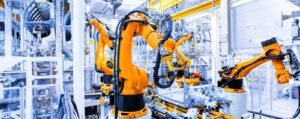Table of Contents
Introduction
Starting a hardware business can be exciting and rewarding but comes with its fair share of challenges. From prototyping and manufacturing to distribution and marketing, hardware startups face unique hurdles that can make or break their success. Unfortunately, many entrepreneurs fall into the same traps and make avoidable mistakes that hinder their progress. In this article, I’ll highlight the top five mistakes that hardware startups commonly make and provide practical advice on how to avoid them. Whether you’re just starting out or already running a hardware business, this guide will help you navigate the pitfalls and stay on the path to success. So, hardware startups, beware: these are the top five mistakes you must dodge.
Choosing the Wrong Technical Co-founder
As a part of my job, I’ve talked to numerous startup founders. Most startups that struggle in product development tend to have one thing in common: the technical co-founder/CTO is a software engineer, often a pretty good one.
The fact is, software is only one small piece of any hardware product. Apart from software development, there are several other disciplines, such as industrial engineering, mechanical engineering, electronic engineering, manufacturing engineering, etc. It’s impractical to expect someone to understand those without years of learning and practising.
It doesn’t take a genius to figure out that if the tech co-founder is not qualified, everything under his management will fall apart eventually.
While finding a technical co-founder is hard enough, the ugly truth is that finding a technical co-founder specialising in hardware products is even harder.
The primary reason is that the pool of talent is rather limited. Few engineers specialise in hardware product development or manufacturing. If your local market is not particularly competitive, this results in a smaller talent pool to source expertise from
Another reason is that hardware product design and development is a complex and time-consuming process requiring specialised knowledge and expertise. This makes it fairly tricky for non-technical founders to evaluate the skills and experience of potential co-founders.
In addition, since hardware is often more complex and expensive than software development, seasoned engineers are generally more risk-averse. They prefer to work for established companies rather than startups.
If you’re having trouble recruiting a hardware expert full-time, consider hiring a technical advisor part-time. A good technical advisor should be able to guide you through your journey from development to manufacturing based on his own experience.
Apart from developing the product in-house, you can delegate some or all of the product development work to a product development agency. Make sure you choose an experienced agency with a trackable record of success and a good reputation, as the risk of developing a hardware product is much more significant than a software product.
Underestimating the Complexity of Product Design and Manufacturing
Another common mistake, which often stems from not having the right technical co-founder, is underestimating the complexity of hardware product design and manufacturing.
If a startup underestimates this, it will most likely need to allocate more resources to the project. This can lead to cost overruns and cash flow problems.
Unlike software engineering, hardware product development involves many stages, including design, prototyping, testing, and manufacturing. If the time required for each stage is underestimated, it can delay bringing the product to market, and you may even miss the deadline.
On the other hand, “rushing” the product design and manufacturing process will almost always lead to quality problems. Defective products can damage the startup’s reputation and lead to customer dissatisfaction. Unlike software, remediating a hardware problem is normally much harder once the product rolls out, as it typically involves product recall.
Make sure you also understand what it takes to industrialise a product. Product industrialisation is the process of transforming a prototype from the design phase to full-scale manufacturing and distribution. It includes various activities, including optimising the design for manufacturability, selecting and qualifying suppliers, setting up production lines, developing manufacturing processes, testing and validating the product, and preparing for mass production.
Unlike product design which you can carry out in-house, these activities typically require support from 3rd parties, which means you must reserve enough cash and time for them.
I highly recommend that you familiarise yourself with the entire product development and manufacturing process as much as possible, especially if the technical co-founder in your company doesn’t have a strong background in hardware product engineering. In our ebook, “How We’ve Developed 100+ Hardware Products“, I revealed the exact steps EasyIOT takes to develop, industrialise, and manufacture a product.
Failing to Secure Funding Early On
Due to the complexity of hardware product development and manufacturing, it requires significantly more upfront investment than software engineering. This is a big reason that “hardware is hard”, as raising capital is never an easy job for a startup.
Like Warren Buffet said: Cash is like oxygen. Insufficient capital can hamper all aspects of a startup, including product development, market research and talent acquisition.
For most startups, the best time to raise substantial capital is after you have a working prototype. This is often not a problem for software companies, as designing an early product version doesn’t cost much, making even bootstrapping possible. In some cases, a capable technical cofounder can do all the development work himself.
For hardware startups, raising capital is trickier because developing a prototype (not a proof-of-concept prototype) requires a multi-disciplinary team of engineers, even with much fewer features. This means it costs significantly more to get to the stage of a working prototype, which you can use to raise funds from investors like VC firms.
In the post “The Real Cost of Developing an Electronic Product“, I talked about how much funding you should prepare to develop a decent prototype that can be used for fund-raising. For customer products and simple industrial devices, I’d recommend securing funding of at least USD50,000 before starting project development.
Inadequate Market Research
While the above are common reasons for failure in business-driven startups, several business mistakes are often found in tech-driven startups. According to my observation, the number one reason is inadequate market research.
Simply put, your startup will struggle if you don’t do enough market research. The reason is simple: Without doing enough market research, you won’t know exactly what your prospective customers want. Only if you can get into their mind can you understand how to solve their challenges using your product, hence making a sale.
In addition, as market research provides insight into customer needs and preferences, it can guide your product development, from figuring out critical features to nailing down the cost per unit. What is worse than failing to develop a product is building one nobody wants.
To ensure your startup will succeed financially, I recommend a three-step process to conduct your market research.
- Do it on paper. This includes identifying the target market, understanding customer needs and preferences, assessing competition, and determining the potential market size.
- Do it in the field. This involves collecting data directly from potential customers through surveys, focus groups, and interviews. This helps you better understand customer needs and preferences and validate some of the data you’ve collected from the previous step.
- Apply the insights. This includes refining the product design, identifying key features, setting pricing, and developing marketing strategies.
Not Starting Marketing and Sales Early Enough
Another common mistake, often found in tech-driven startups, is not starting marketing and sales early enough. As surprising as it sounds, I’ve met multiple start-up founders whose commercialisation plan is to hire a “sales” guy after the product is developed and let this guy do all the work. (The counterpart is to hire one “electronic” engineer and expect him to turn a product idea into reality.)
Not starting marketing and sales early enough can lead to many consequences. For example, a startup may struggle to create awareness and generate interest among potential customers. This makes it difficult to build a customer base and generate revenue.
Additionally, investors typically want to see evidence of customer interest and revenue potential before investing in a startup. If a startup doesn’t have a clear marketing and sales strategy and track record, it may struggle to secure funding.
I believe even the most high-tech startup should be business-driven to profit in today’s economy. Unless you have secret world-changing technology, you will likely directly or indirectly compete with numerous competitors worldwide.
To stand out from the competition, consider doing what others do but do it better. That means you should have a carefully thought-out marketing and sales plan before product development starts. Like every other business, your plan must cover the target audience, value proposition, messaging, marketing channels, budget, KPIs, sales process, etc.
If you do not have a business co-founder in your team who is well on top of it, then you will have to be the person to do all this, and the sooner you start learning, the better.
Conclusion
Starting a hardware business is no small feat, but with the right approach and caution, you can avoid some of the most common pitfalls that have tripped up many entrepreneurs before you. By carefully choosing your technical co-founder, correctly understanding the complexity of product design and manufacturing, securing enough capital, researching your market, and starting marketing and sales as early as possible, you’ll be setting yourself up for success. Remember that mistakes are inevitable in any startup, but how you learn from them counts. So, go forth confidently, avoid these five mistakes, and build a thriving hardware business.






